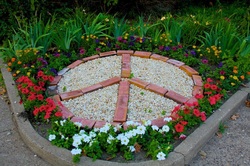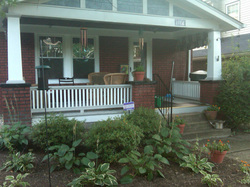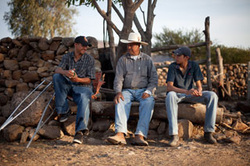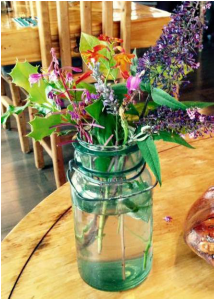
The peace garden, above, was built by Chris and others on the corner of a block where a young man was murdered. Again, the community came together to work on this, and continues to maintain it.
I will tell only a tiny bit of Chris' story, because I really want you to visit his blog yourself and, if you are in Pittsburgh, to meet him in person. Chris told me about his decade-long heroin addiction that was so bad that his family lived with a constant fear of a phone call announcing either his death or arrest. He said to me that he has put so much bad karma out there in his life that he is trying to return as much good karma as he can. I asked Chris if he considered his garden and neighborhood work to be part of his recovery. His response - "It IS my recovery!" On Friday, before he left to install a water heater in a neighbor's home, Chris gave me some zucchini and onions, which we added to our own tomatoes, radishes, and lettuce for a good meal that night.
The only word that I can think of to describe an experience like this - to describe what Chris does in general - is love (Chris, don't know if you agree or not - but that's how I see it!). Love, laced with generosity, forgiveness, accountability, and responsibility. Not bad. I know Chris does not consider himself a saint, however - he acknowledged feeling frustrated when people don't always pitch in to take care of the flowers that beautify the street. But the generosity, enthusiasm, and caring are what came through when I listened to Chris.
Michael and Leah's wedding is almost upon us! It will truly be a celebration with so many families and friends gathered together to bless this union. Leah and Michael have love - lots of it. They are patient with one another, generous, forgiving, kind. This is a good way to start a life-time together. Please keep them - and Chris and his kids and friends - in your heart and prayers.
Pictures below - Leah and Mikey, and the garden and young gardeners via Chris' blog.







 RSS Feed
RSS Feed
